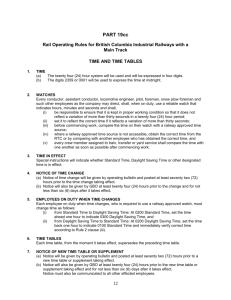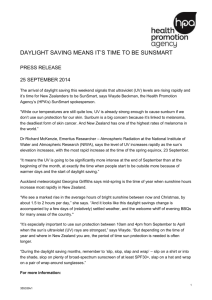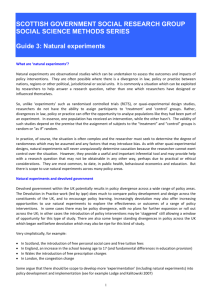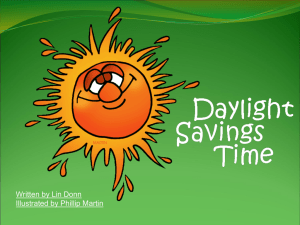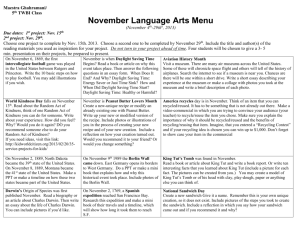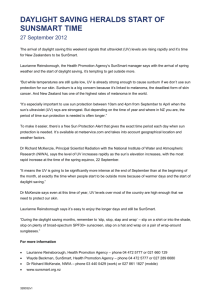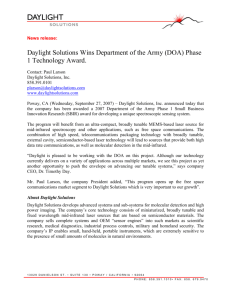Clocks' Early Spring Forward May Bring About a Few Falls
advertisement
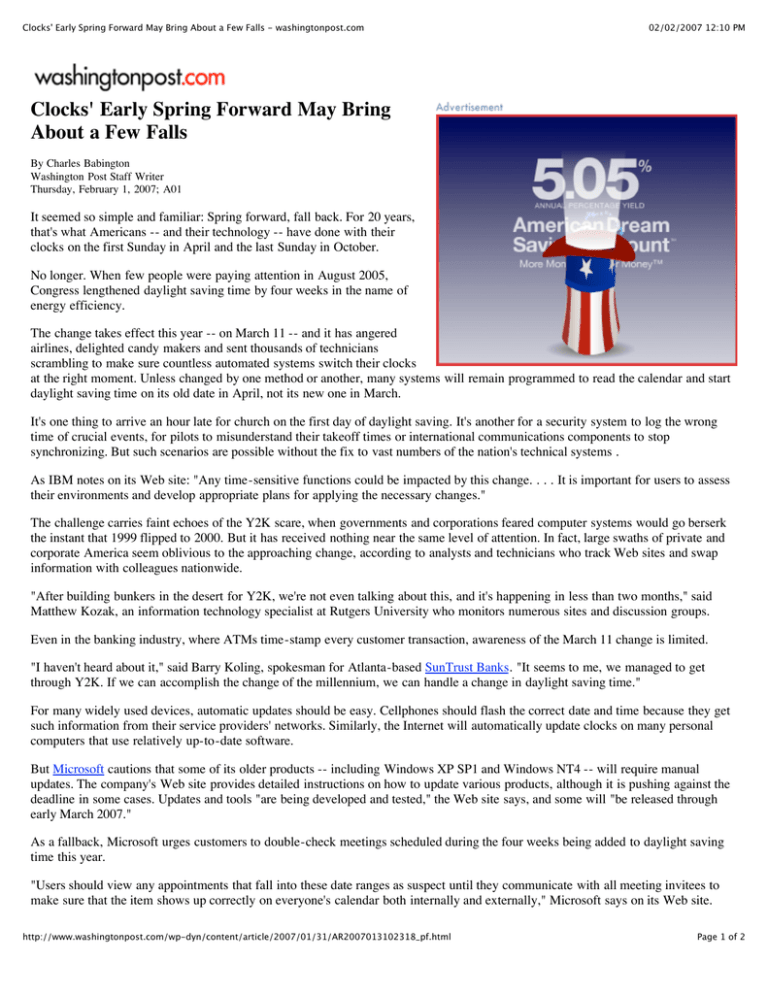
Clocks' Early Spring Forward May Bring About a Few Falls - washingtonpost.com 02/02/2007 12:10 PM Clocks' Early Spring Forward May Bring About a Few Falls By Charles Babington Washington Post Staff Writer Thursday, February 1, 2007; A01 It seemed so simple and familiar: Spring forward, fall back. For 20 years, that's what Americans -- and their technology -- have done with their clocks on the first Sunday in April and the last Sunday in October. No longer. When few people were paying attention in August 2005, Congress lengthened daylight saving time by four weeks in the name of energy efficiency. The change takes effect this year -- on March 11 -- and it has angered airlines, delighted candy makers and sent thousands of technicians scrambling to make sure countless automated systems switch their clocks at the right moment. Unless changed by one method or another, many systems will remain programmed to read the calendar and start daylight saving time on its old date in April, not its new one in March. It's one thing to arrive an hour late for church on the first day of daylight saving. It's another for a security system to log the wrong time of crucial events, for pilots to misunderstand their takeoff times or international communications components to stop synchronizing. But such scenarios are possible without the fix to vast numbers of the nation's technical systems . As IBM notes on its Web site: "Any time-sensitive functions could be impacted by this change. . . . It is important for users to assess their environments and develop appropriate plans for applying the necessary changes." The challenge carries faint echoes of the Y2K scare, when governments and corporations feared computer systems would go berserk the instant that 1999 flipped to 2000. But it has received nothing near the same level of attention. In fact, large swaths of private and corporate America seem oblivious to the approaching change, according to analysts and technicians who track Web sites and swap information with colleagues nationwide. "After building bunkers in the desert for Y2K, we're not even talking about this, and it's happening in less than two months," said Matthew Kozak, an information technology specialist at Rutgers University who monitors numerous sites and discussion groups. Even in the banking industry, where ATMs time-stamp every customer transaction, awareness of the March 11 change is limited. "I haven't heard about it," said Barry Koling, spokesman for Atlanta-based SunTrust Banks. "It seems to me, we managed to get through Y2K. If we can accomplish the change of the millennium, we can handle a change in daylight saving time." For many widely used devices, automatic updates should be easy. Cellphones should flash the correct date and time because they get such information from their service providers' networks. Similarly, the Internet will automatically update clocks on many personal computers that use relatively up-to-date software. But Microsoft cautions that some of its older products -- including Windows XP SP1 and Windows NT4 -- will require manual updates. The company's Web site provides detailed instructions on how to update various products, although it is pushing against the deadline in some cases. Updates and tools "are being developed and tested," the Web site says, and some will "be released through early March 2007." As a fallback, Microsoft urges customers to double-check meetings scheduled during the four weeks being added to daylight saving time this year. "Users should view any appointments that fall into these date ranges as suspect until they communicate with all meeting invitees to make sure that the item shows up correctly on everyone's calendar both internally and externally," Microsoft says on its Web site. http://www.washingtonpost.com/wp-dyn/content/article/2007/01/31/AR2007013102318_pf.html Page 1 of 2 Clocks' Early Spring Forward May Bring About a Few Falls - washingtonpost.com 02/02/2007 12:10 PM Similarly, network equipment maker Cisco Systems "has undertaken a company-wide initiative to supply documentation that describes how to update each product," the firm said in a recent online notice. "Customers should contact any vendor that uses timesensitive messaging or other time-stamped communications in order to determine the impact." "This is an important issue," said Cisco spokesman John Noh, cautioning companies and consumers against too much complacency. The congressional debate over expanding daylight saving time barely caused a ripple in the spring and summer of 2005. It was buried in a wide-ranging energy bill that got attention for granting tax breaks to oil and gas companies. Advocates said the nation could save about 100,000 barrels of oil a day by extending daylight saving time, pushing more human activity into sunlight hours and reducing the use of light bulbs. So lawmakers agreed to start daylight saving time three weeks earlier -- on the second Sunday in March -- and end it a week later, on the first Sunday in November. Some airlines fought the change, saying it would cost millions of dollars to change domestic schedules to match landing and takeoff slots at international airports. But President Bush signed the measure in August 2005, and the matter seemed to hibernate until corporate and government officials began realizing what the March 11 onset might entail. If the change is prompting confusion and consternation, it's in keeping with daylight saving time's curious history. First proposed by Benjamin Franklin, it was briefly adopted by Congress during World War I. In 1966, Congress set daylight saving time to begin in April and end in October but temporarily extended the period during the mid-1970s energy crisis. In 1986, Congress scheduled daylight saving to start at 2 a.m. on the first Sunday in April and to end on the last Sunday in October. And there it has remained for two decades, a period of explosive growth in the use of computers. Although Congress had stopped meddling for 20 years, some states and counties kept feuding. After resisting for years, Indiana adopted daylight saving time last year. But Hawaii does not recognize it, nor does Arizona -- except on its large Navajo reservation. If there is a sweet ending to the debate, it will occur Oct. 31. Candy manufacturers lobbied for years to stretch daylight saving time to encompass Halloween. Not only will children have more daylight hours to consume treats, they contend, but they will be safer zipping across streets in their costumes. And if Nov. 1 seems unusually dark and cold when the first school bell rings, perhaps they can warm themselves with thoughts of unused barrels of oil. © 2007 The Washington Post Company Ads by Google What's your Credit Score ? 677 ? 720 ? 598 ? The cost to see yours: $0 www.Fre e Cre d itRe p o rt.co m http://www.washingtonpost.com/wp-dyn/content/article/2007/01/31/AR2007013102318_pf.html Page 2 of 2
